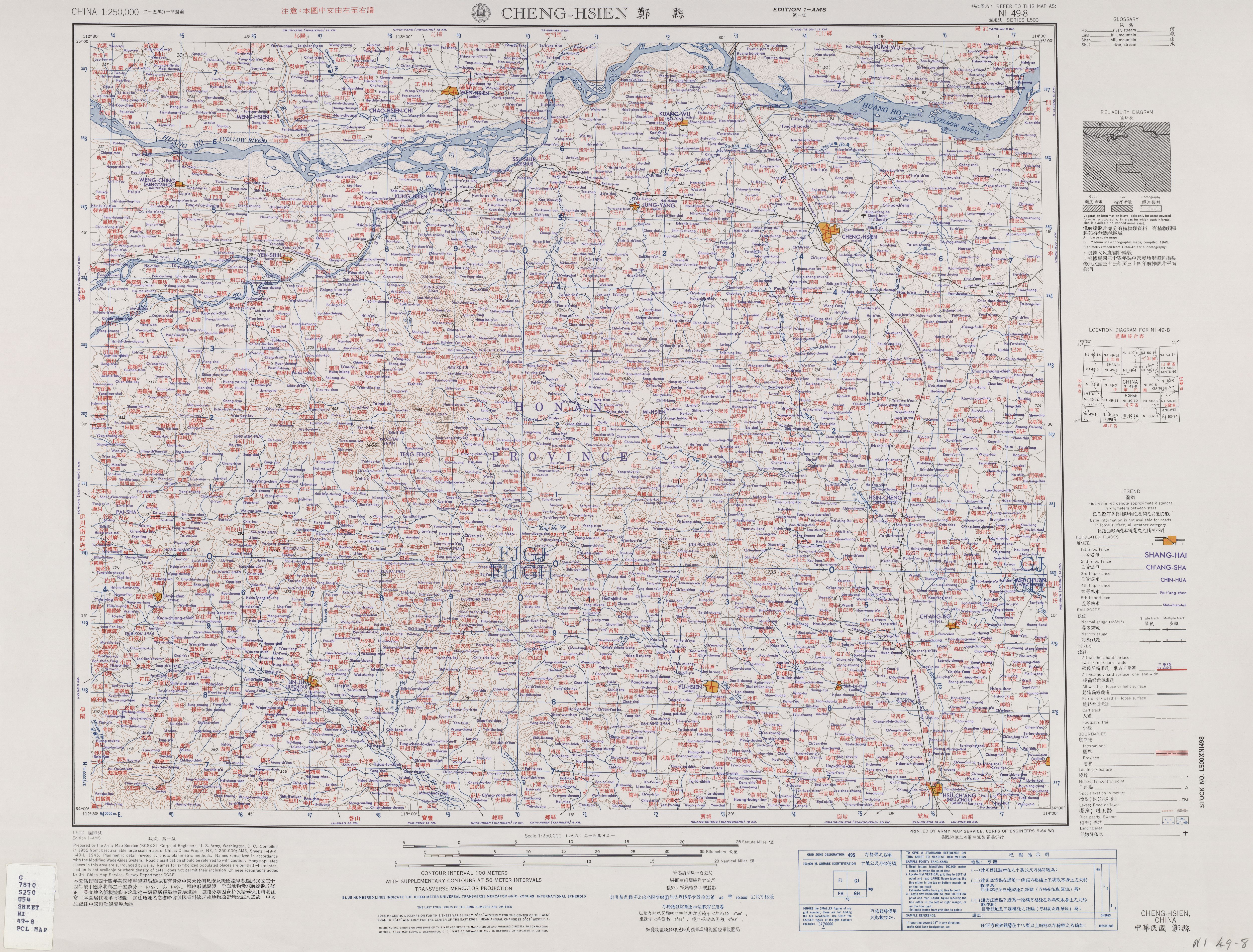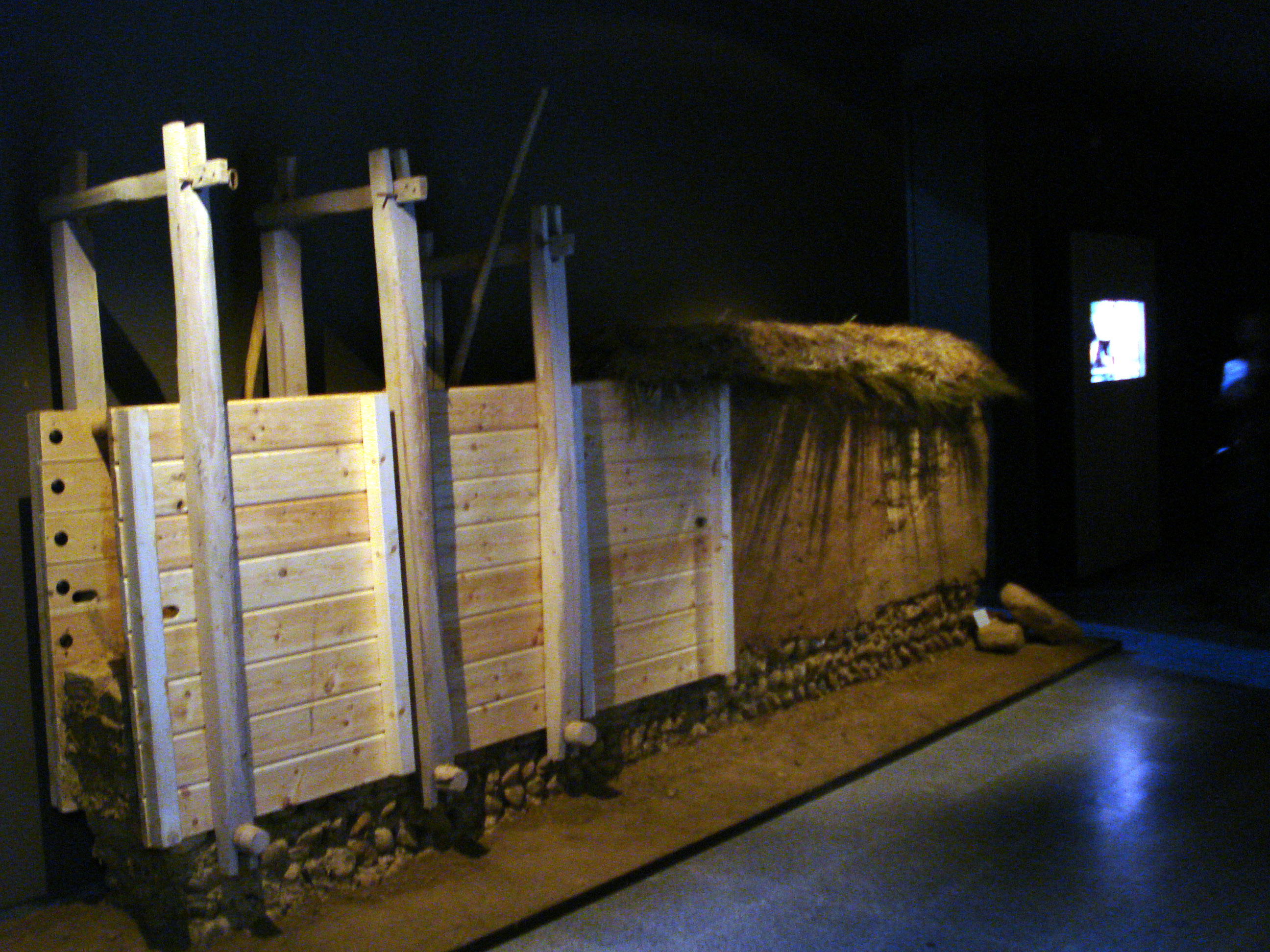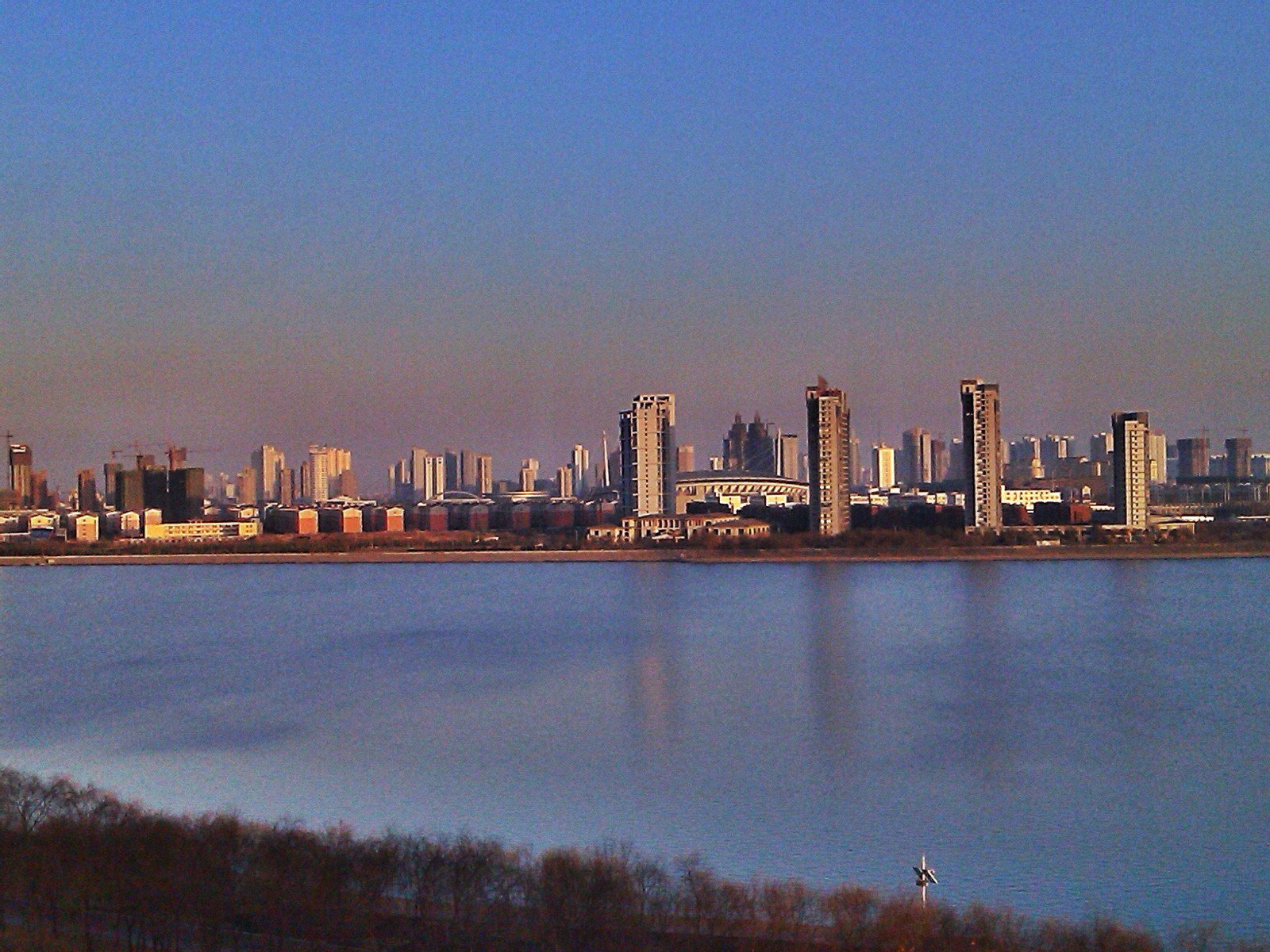|
Erlitou Culture
The Erlitou culture () was an early Bronze Age society and archaeological culture. It existed in the Yellow River valley from approximately 1900 to 1500 BC. A 2007 study using radiocarbon dating proposed a narrower date range of 1750–1530 BC. The culture is named after Erlitou, an archaeological site in Yanshi, Luoyang, Yanshi, Henan. It was widely spread throughout Henan and Shanxi and later appeared in Shaanxi and Hubei. Most archaeologists consider Erlitou the first state (polity), state-level society in China. Chinese archaeologists generally identify the Erlitou culture as the site of the Xia dynasty, but there is no firm evidence, such as surviving written records, to substantiate such a linkage, as the earliest evidence of Chinese writing dates to the Late Shang period. Erlitou site The Erlitou culture may have evolved from the matrix of Longshan culture. Originally centered around Henan and Shanxi province, the culture spread to Shaanxi and Hubei provi ... [...More Info...] [...Related Items...] OR: [Wikipedia] [Google] [Baidu] |
Henan
Henan; alternatively Honan is a province in Central China. Henan is home to many heritage sites, including Yinxu, the ruins of the final capital of the Shang dynasty () and the Shaolin Temple. Four of the historical capitals of China, Luoyang, Anyang, Kaifeng and Zhengzhou, are in Henan. While the province's name means 'south of the river', approximately a quarter of the province lies north of the Yellow River. With an area of , Henan covers a large part of the fertile and densely populated North China Plain. Its neighboring provinces are Shaanxi, Shanxi, Hebei, Shandong, Anhui, and Hubei. Henan is China's third-most populous province and the most populous among inland provinces, with a population of over 99 million as of 2020. It is also the world's seventh-most populous administrative division; if it were a country by itself, Henan would be the 17th-most populous in the world, behind Egypt and Vietnam. People from Henan often suffer from regional discrimination ... [...More Info...] [...Related Items...] OR: [Wikipedia] [Google] [Baidu] |
Siba Culture
The Siba culture (), also called Huoshaogou culture (), was a Bronze Age archaeological culture that flourished circa 1900 to 1500 BC in the Hexi Corridor, in Gansu Province of Northwest China. It was discovered in 1984 at Sibatan in Shandan County. Siba type pottery vessels are different from the others in Gansu. Siba produced painted pottery with coloured decorations; these were painted after the vessels had been fired. Similar pottery was used by the Tianshanbeilu culture at Hami Depression, Hami basin to the west. Characteristics The Siba engaged in agricultural activities like millet farming and pig farming. Their metallurgy was highly developed. Siba culture is found mainly to the west of the Gansu corridor. The locations are found at Yongchang, Minyue, Jiuquan, Yumen counties, and others. Siba culture is bordered by the Qijia culture to the east. The later period of Qijia is very close to Siba culture. The Siba culture may have developed independently. The site of Ganguy ... [...More Info...] [...Related Items...] OR: [Wikipedia] [Google] [Baidu] |
Qijia Culture
The Qijia culture (2400 BC – 1600 BC) was an early Bronze Age culture distributed around the upper Yellow River region of Gansu (centered in Lanzhou) and eastern Qinghai, China. It is regarded as one of the earliest bronze cultures in China. The Qijia Culture is named after the Qijiaping Site (齐家坪) in Gansu Province. Prior to Qijia culture, in the same area there existed Majiayao culture that was also familiar with metalwork. At the end of the third millennium B.C., Qijia culture succeeded Majiayao culture at sites in three main geographic zones: Eastern Gansu, Middle Gansu, and Western Gansu/Eastern Qinghai. The Qijia culture benefited from the warm and humid climatic conditions from the Late Glacial to the Middle Holocene, which led to flourishing agricultural production and rapid population growth. These conditions changed with the aridification of the Late Holocene, provoking material and cultural decline. Research Johan Gunnar Andersson discovered the initial si ... [...More Info...] [...Related Items...] OR: [Wikipedia] [Google] [Baidu] |
Zhengzhou
Zhengzhou is the capital of Henan, China. Located in northern Henan, it is one of the nine National central city, national central cities in China, and serves as the political, economic, technological, and educational center of the province. The Zhengzhou metropolitan area (including Zhengzhou and Kaifeng) is the core area of the Central Plains Economic Zone. The city lies on the southern bank of the Yellow River. Zhengzhou is a major hub of China's domestic and international transportation network; for example, it is connected to Europe and has an international airport. Zhengzhou is a National Civilized City and a List of National Famous Historical and Cultural Cities in China, State-list Famous Historical and Culture City. As of 2020, there are two List of World Heritage Sites in China, World Cultural Heritage Sites in Zhengzhou. The Zhengzhou Commodity Exchange (ZCE) is China's first futures exchange. Zhengzhou Airport Economy Zone is China's first Airport Economy Zone. As o ... [...More Info...] [...Related Items...] OR: [Wikipedia] [Google] [Baidu] |
Yanshi
Yanshi District () is a district in the prefecture-level city of Luoyang in western Henan province, China. Yanshi lies on the Luo River and is the easternmost county-level division of Luoyang. History After the Zhou conquest of Shang in mid-11th century BC, King Wu of Zhou founded a garrison town to the east of modern Yanshi to accommodate some of the campaigning troops. When Qin annexed Zhou in 256 BC, Yanshi County was established. The county's borders underwent several changes over the course of history. In 1993, Yanshi County became the county-level Yanshi City. In 2021, it became Yanshi District of Luoyang City. Administrative divisions As of 2012, Yanshi is divided to 11 towns and 3 townships. ;Towns ;Townships Climate Archaeological sites There are two important archaeological sites in this area. Erlitou site Erlitou, the type site of the Erlitou culture (1900–1500 BC), was discovered in Yanshi in 1959. Erlitou is the name of the modern village nearby; the t ... [...More Info...] [...Related Items...] OR: [Wikipedia] [Google] [Baidu] |
Rammed Earth
Rammed earth is a technique for construction, constructing foundations, floors, and walls using compacted natural raw materials such as soil, earth, chalk, Lime (material), lime, or gravel. It is an ancient method that has been revived recently as a sustainability, sustainable building material, building method. Under its French name of pisé it is also a material for sculptures, usually small and made in Molding (process), molds. It has been especially used in Central Asia and Tibetan art, and sometimes in China. Edifices formed of rammed earth are found on every continent except Antarctica, in a range of environments including temperate, wet, semiarid desert, montane, and tropical regions. The availability of suitable soil and a architecture, building design appropriate for local climate, climatic conditions are two factors that make its use favourable. The French term "pisé de terre" or "terre pisé" was sometimes used in English for architectural uses, especially in the 19 ... [...More Info...] [...Related Items...] OR: [Wikipedia] [Google] [Baidu] |
Luoyang
Luoyang ( zh, s=洛阳, t=洛陽, p=Luòyáng) is a city located in the confluence area of the Luo River and the Yellow River in the west of Henan province, China. Governed as a prefecture-level city, it borders the provincial capital of Zhengzhou to the east, Pingdingshan to the southeast, Nanyang to the south, Sanmenxia to the west, Jiyuan to the north, and Jiaozuo to the northeast. As of December 31, 2018, Luoyang had a population of 6,888,500 inhabitants with 2,751,400 people living in the built-up (or metro) area made of the city's five out of six urban districts (except the Jili District not continuously urbanized) and Yanshi District, now being conurbated. By the end of 2022, Luoyang Municipality had jurisdiction over 7 municipal districts, 7 counties and 1 development zone. The permanent population is 7.079 million. Situated on the central plain of China, Luoyang is among the oldest cities in China and one of the cradles of Chinese civilization. It is the earl ... [...More Info...] [...Related Items...] OR: [Wikipedia] [Google] [Baidu] |
Erlitou Site Museum Of The Xia Capital
Erlitou Site Museum of the Xia Capital is a museum that mainly displays the archaeological artefacts of the Erlitou culture, a Chinese Bronze Age culture that Chinese researchers believe to be the capital of the quasi-historical Xia dynasty. The museum is located in Sijiaolou village of Yanshi, Luoyang, Yanshi District, Luoyang City, Henan Province, about 300 meters away from the Erlitou Ruins Reserve in the north, and south of the Gucheng Expressway. The museum is co-built and managed by the Luoyang Municipal Government and the Institute of Archaeology, Chinese Academy of Social Sciences, Chinese Academy of Social Sciences Institute of Archaeology. History For many years after the excavation work was carried out in 1959, the Erlitou site did not have adequate facilities for the storage, study, safekeeping, and display of unearthed relics. The construction of a museum at the site had been on the agenda many times, and the plan for the museum was finalized in February 2017. Ground ... [...More Info...] [...Related Items...] OR: [Wikipedia] [Google] [Baidu] |
Luo River (Henan)
The Luo River () is a tributary of the Yellow River in China. It rises in the southeast flank of Mount Hua in Shaanxi province and flows east into Henan province, where it eventually joins the Yellow River at the city of Gongyi. The river's total length is . Although not a major river by most standards, it flows through an area of great archaeological significance in the early history of China. Principal cities or prefectures located on the river include Lushi, Luoning, Yiyang, Luoyang, Yanshi, and Gongyi. The Luo's main tributary is the Yi River, which joins it at Yanshi, after which the river is called the Yiluo River. See also * Lo Shu Square * Peiligang culture The Peiligang culture was a Neolithic culture in the Yi-Luo river basin (in modern Henan Province, China) that existed from about 7000 to 5000 BC. Over 100 sites have been identified with the Peiligang culture, nearly all of them in a fairly ... External links Confluence of the Luo and Yellow Rivers ... [...More Info...] [...Related Items...] OR: [Wikipedia] [Google] [Baidu] |
Yi River (Henan)
The Yi River () is a tributary of the Luo River in the province of Henan, China. The river rises in Luanchuan County, and then flows through the counties of Song and Yichuan before entering Luoyang city proper. It joins the Luo River at Yanshi Yanshi District () is a district in the prefecture-level city of Luoyang in western Henan province, China. Yanshi lies on the Luo River and is the easternmost county-level division of Luoyang. History After the Zhou conquest of Shang in mid-11t .... The river's total length is 368 kilometres and it has a catchment basin of 6,100 square kilometres. The Yi-Luo river basin is of major archaeological significance. Rivers of Henan {{China-river-stub ... [...More Info...] [...Related Items...] OR: [Wikipedia] [Google] [Baidu] |






